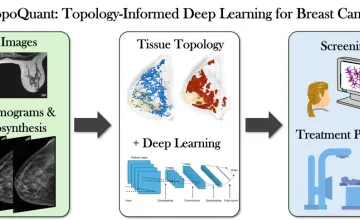AAU universities conduct a majority of the federally funded university research that contributes to our economic competitiveness, health and well-being, and national security. AAU universities are growing our economy through invention and innovation while preparing the next generation of scientists and engineers for global leadership. By moving research into the marketplace AAU universities are helping to create jobs, and provide society with new medicines and technologies.

UMD geologists uncovered evidence of a section of seafloor that sank into the Earth's mantle when dinosaurs roamed the Earth; it's located off the west coast of South America in a zone known as the East Pacific Rise.

Novel research supported by NCI could lead to more specific predictive disease models

A new University of Kansas study reveals parents seeking health care information for their children trust AI more than health care professionals when the author is unknown, and parents rate AI generated text as credible, moral and trustworthy.

Hypertension and amyloid plaques can separately cause dementia. Having both increases a person’s odds of developing cognitive decline, a new study finds
Explore More: University Research
You can filter stories by the university.
MSU researchers have developed and are testing an irrigation technology called Low-Cost Monitoring System, or LOCOMOS.
A new study from UCSC proposes a novel method to detect dark matter by observing changes in Mars' orbit. The study suggests that primordial black holes—tiny, dense objects formed after the Big Bang—pass through our solar system about once every decade.
Researchers at UC Santa Cruz are playing a key role in global efforts to create high-quality reference genomes for various species as part of the Earth BioGenome Project (EBP). The team helped coordinate a pilot project involving scientists from 33 European countries to sequence 98 plant and animal species important for conservation.
A study by Rutgers University-New Brunswick researchers has shown that military veterans with post-traumatic stress disorder (PTSD), who participated in a program caring for horses, experienced an improved mental outlook and easing of symptoms.
Based on 20 years of research, a psychology professor at the University at Buffalo has introduced the concept of "social embeddedness," which states that beyond interpersonal relationships, humans have a deep need to feel connected to broader society.
